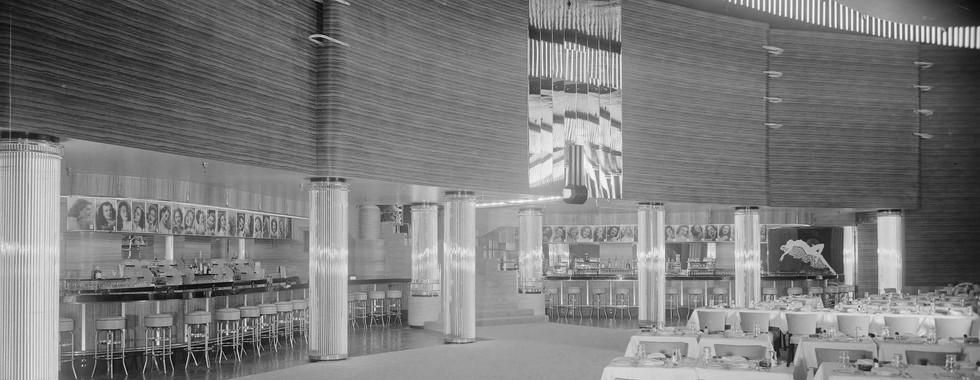Earl Carroll Theatre: Hollywood’s Entertainment Palace
- KP
- May 26, 2023
- 2 min read
Earl Carroll built Hollywood’s premier entertainment palace for his princess: singer-dancer-actress Beryl Wallace—whom he immortalized with a 20-foot neon portrait along Sunset Boulevard.
Designed by master architect Gordon B. Kaufmann (Hollywood Palladium, LA Times Building, Hoover Dam), the ultra-modern Earl Carroll Theatre was the first of its kind in the U.S.: an open concept with the lobby, bar, and auditorium separated by terraces. In the back of the room, a staircase led to the restrooms. The ladies lounge offered seating made of peach-colored lamb’s wool.
Innovative machinery brought the lavish revues to life, with a 60-foot dual revolving stage (pictured below during construction), water curtain, “girl lift” that transported dancers onstage through the floor, 100-foot staircase, mobile orchestra pit, and swings that lowered from the ceiling.
The nightly acts featured dozens of showgirls, all handpicked by Carroll: “blondes, brunettes, redheads, tall ones, short ones, willowy ones, and statuesque ones; some smiling and some sullen, and all of them lovely,” reported the Citizen News on Dec. 27, 1938.

Zeon, a variation of neon, illuminated the sleek interior with 10,000 lights encased in glass columns and fringes that hung from the black patent leather ceiling. It all emanated from a 50-foot neon ribbon held by the Goddess of Light, an aluminum statue stationed in the cocktail foyer.
When the supper club opened in 1938, half of Hollywood turned out to see “the most beautiful girls in the world” as promised by Carroll, a New York showman whose Vanities once rivaled Ziegfeld’s Follies.
The first night, the A-list audience included Marlene Dietrich, Claudette Colbert, and Errol Flynn, who arrived by limousine in the three-bay porte-cochère.
The “inner circle” paid a $1,000 membership that guaranteed a lifetime reserved seat closest to the stage. For commoners, the $10 cover charge included dinner but not cocktails, which cost 50 cents.
“This town needs a place like my theater-restaurant to draw from the great middle class,” Carroll told the Los Angeles Citizen News. “I’m after the fellow who makes $30 a week and once a month says to his wife or sweetheart, “let’s blow it—the government gets most of it anyway.’”

After a decade of success, tragedy struck in 1948 when Carroll and Wallace were passengers on a United Airlines plane that exploded in Pennsylvania, killing everyone onboard. The couple was the name and face of the theater, and without them it struggled.

In 1953, the complex was sold to Las Vegas showman Frank Sennes who reopened it as the Moulin Rouge nightclub. Over the years, the complex changed hands several times, with the last tenant being Nickelodeon until 2017.
The good news: Earl Carroll Theatre has been designated a landmark.
The bad news: Talks to revitalize it ended last year.
Currently, the Earl Carroll is for sale—and still awaiting the exterior restoration promised by developers when City Council approved their plans to build the adjoining Wallace apartments … which opened in 2021.































Comments